Kyphosis
What Is Kyphosis?
Kyphosis is a condition in which the spine in the upper back has an excessive curvature. This curvature can cause a hunched or slouching appearance that is commonly referred to as hunchback or round back. Kyphosis can lead to excess pressure on the spine, causing pain. It may also cause breathing difficulties due to pressure on the lungs.
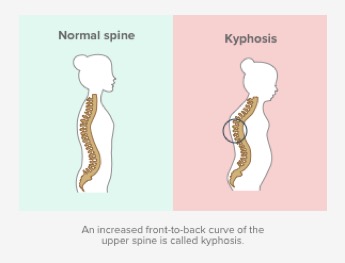
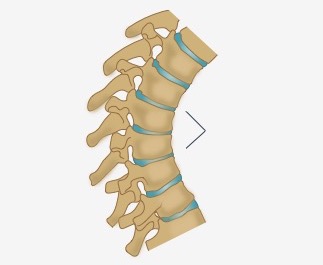
Kyphosis is a condition where your spine has an exaggerated, forward curve as a result of an abnormal shape of the thoracic spine.
Kyphosis is often referred to as a round back or hunchback. It varies in severity and generally the greater the curve the more serious the condition.
Different Types of Kyphosis
There are many types of Kyphosis. The type of kyphosis determines the treatment plan your doctor develops for you.
The most common types of kyphosis are postural kyphosis, structural kyphosis, Scheuermann’s kyphosis, and congenital kyphosis.
Postural Kyphosis
This condition is most common during adolescence. may cause more rounding in the spine than normal. It relates to slouching or bad posture, causing rounding in the spine as the spine grows. It can be corrected when you change your posture.
Structural Kyphosis
A hump caused by structural kyphosis can’t be corrected just by thinking about your posture. Structural kyphosis is the result of structural abnormalities in the spine, such as a deformity in the spinal bones.
The hump caused by structural kyphosis is much more angular than a hump caused by postural kyphosis. A particularly sharp, angular curve is called a gibbus deformity. In diagnosing structural kyphosis, the doctor will look for a gibbus.
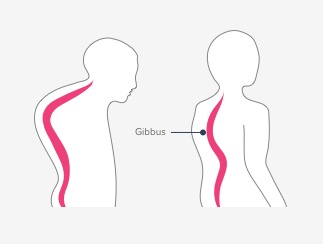
Structural kyphosis is further divided into two types:
- Primary Structural Kyphosis: This type of kyphosis isn’t caused by another medical condition.
- Secondary Structural Kyphosis: This type of kyphosis is caused by another medical condition.
Examples of Primary Structural Kyphosis:
- Congenital kyphosisis one type of primary structural kyphosis. That means that you’re born with defects in the spine that cause it to curve. Often, heart and kidney problems are associated with congenital kyphosis because the spine, heart and kidneys develop around the same time.
- Scheuermann’s Kyphosis: The best example of primary structural kyphosis. This condition is a developmental type of kyphosis, meaning that it occurs during growth. Normally, the spinal bones are rectangular-shaped and stacked on top of one another like building blocks with a soft cushion in between each one. In Scheuermann’s Kyphosis, the front of the vertebrae doesn’t grow as quickly as the back. Instead of being rectangular, they become wedge shaped and wedged closer together in a triangular shape. This causes the spine to curve more than normal.
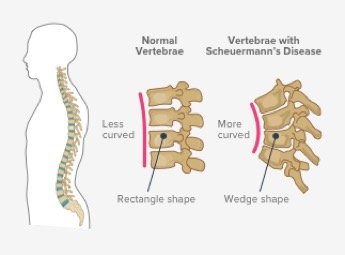
Example of a Secondary Structural Kyphosis:
This type of kyphosis is caused by another condition. For example, osteoporosis in the spine may weaken the vertebrae to the point of fracturing. The spine can then curve outward too much because it has structural problems. Osteoporosis is the primary condition here, while kyphosis is the secondary condition caused by the primary condition.
Anatomy of the Spine
Understanding your spine and how it works can help you better understand spine-related problems.
The spine is a column of 24 moveable bones called vertebrae that are connected to one another by ligaments. The bones are separated by discs, which act as shock absorbers and give the spine flexibility.
Each vertebra has a three-joint complex with a large disc in the front and two facet joints in the back. This strong tripod keeps the bones connected, one on top of the other, while allowing the spine to bend and twist.
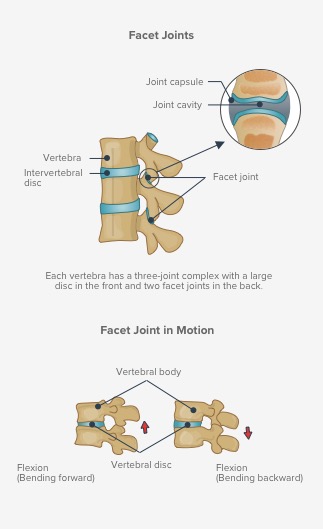
Spinal Curves
Your spine is made up of three segments. When viewed from the side, these segments form three natural curves. The c-shaped curves of the neck (cervical spine) and lower back (lumbar spine) are called lordosis. The reverse c-shaped curve of the chest (thoracic spine) is called kyphosis.
These curves are important for balance and they help us to stand upright. If any one of the curves becomes too large or small, it becomes difficult to stand up straight and our posture appears abnormal.
Anatomy of Kyphosis
You can develop too much of a kyphotic curve, especially in your thoracic spine. The thoracic spine should have a curve of about 20 to 45 degrees. When the curve of the thoracic spine exceeds 50 degrees, you may have kyphosis.
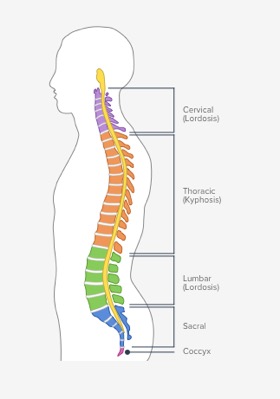
Follow Us
Request An Appointment
Address: 3273 Claremont Way, Ste. 201, Napa, CA 94558
Phone: 707-603-1042
